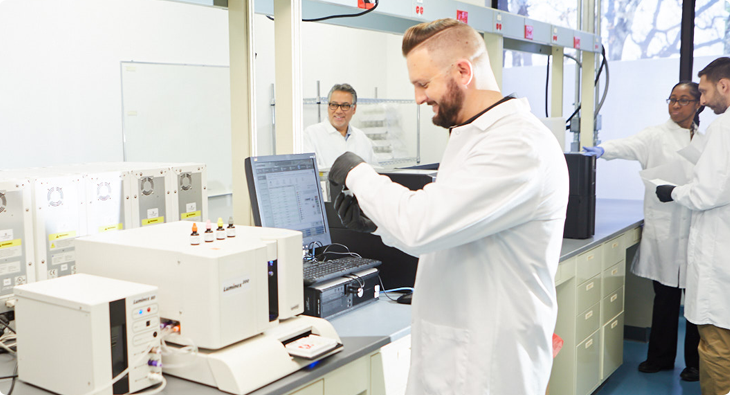Dried blood spot sample type is less invasive and easier for labs to manage

SARS-CoV-2 antibody testing has been well established, but requiring a full blood draw from each individual is invasive and requires a phlebotomist. Now, scientists at the Mayo Clinic have a solution: they validated the Luminex xMAP® SARS-CoV-2 Multi-Antigen IgG Assay for use with dried blood spots, which can be collected with a finger stick.
The ability to get reliable antibody measurements from dried blood spots is an advance for clinical labs. Because blood spots are more stable and viable for longer periods, they are easier and less expensive to ship and store compared to traditional blood draw tubes. They also result in fewer re-sampling orders.
Evolving SARS-CoV-2 antibody testing methods
In a paper published in PLoS One, researchers note that the ability to test dried blood spots would be an important step in expanding serological testing associated with the COVID-19 pandemic. To determine whether scientists could use blood spot samples for SARS-CoV-2 antibody detection, the researchers tested nearly 160 paired samples of dried blood spots and serum specimens collected from the same person. The samples were run using the xMAP assay and two other commercially available assays for comparison.
The Mayo Clinic team had previously validated another SARS-CoV-2 serological assay with dried blood spots, but they found that its high false-positive rate necessitated confirmatory testing, which required a standard blood draw sample. To avoid this, they turned to the multiplex xMAP assay. Because this assay detects IgG for three viral antigens—the spike protein, receptor-binding domain, and nucleocapsid—it is less likely to produce false-positive or false-negative results. In addition, the low sample volume requirements for the xMAP assay make it a good fit for use with dried blood spots.
“We show excellent correlation of results between the modified Luminex xMAP assay performed on [dried blood spot] specimens and the comparator assays with FDA EUA performed on serum,” the team reports. Overall concordance was 96.9%—the authors describe it as “almost perfect agreement”—and went up to 99.4% with the implementation of pattern recognition software designed to adjust detection thresholds.
Compared to other dried blood spot tests, the scientists note that their technique requires the smallest amount of blood: just a 3 mm punch, or about 3.2 μL of whole blood. This allows “some latitude to the quality and amount of finger stick blood collected on the card, which minimizes the need for repeat collection,” they noted.
A high-throughput, reliable testing option
The modified xMAP method also scales well for labs performing high-throughput serology testing. “The extraction, processing, and analysis of 92 patient samples and 4 controls/calibrators can be completed within 6.5 hours by a single technologist,” the team notes. “This protocol allows for a throughput of 644 samples, completed by two technologists using one analyzer, within an 8-hour shift.”
“The Luminex xMAP workflow [for dried blood spots] … presents an attractive and safe means to perform community or institutional seroprevalence studies,” the scientists conclude.
To learn more about the xMAP SARS‑CoV‑2 Multi-Antigen IgG Assay (EUA)—a comprehensive multiplex assay that enables rapid and reliable detection of SARS-CoV-2 antibodies—please visit our website. Read the full Mayo Clinic study referenced in this blog here.
(EUA) In Vitro Diagnostic Use Under Emergency Use Authorization. This test has not been FDA cleared or approved. This test has been authorized by the FDA under an EUA for use by authorized laboratories.
